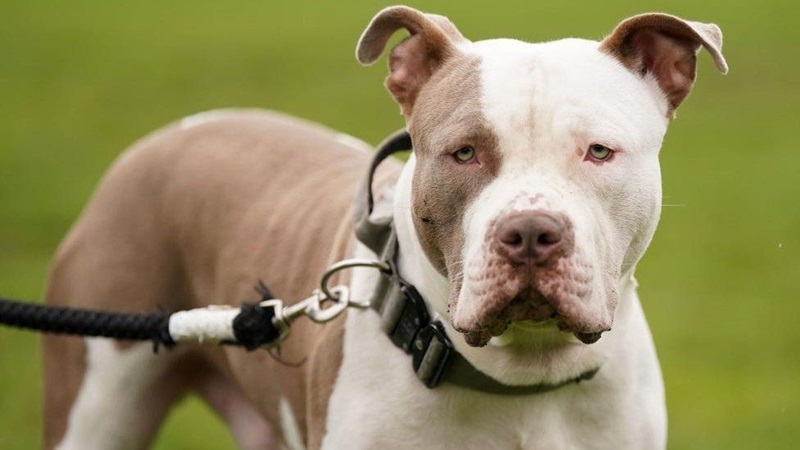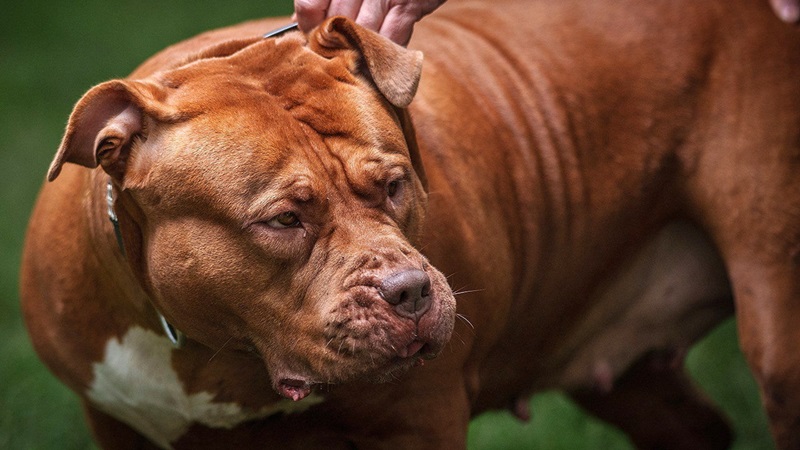The XL Bullies, a breed of dogs known for their robust size and muscular structure, has been the subject of heated debates worldwide. The primary concern lies in the various risks associated with these dogs, primarily due to their size, strength, and sometimes unpredictable behavior. Incidents of aggression, especially towards smaller animals and humans, have been reported, raising questions about their suitability as household pets.
This has led to many authorities proposing and implementing restrictions on owning these dogs, often referred to as a ban. The mechanics of this ban primarily revolve around preventing the breeding, selling, and ownership of these dogs. This is achieved by controlling the import and export of these breeds, requiring licenses for existing owners, and imposing penalties for those who do not comply. However, these measures have been met with substantial opposition from advocates who believe that the behavior of these dogs is more a reflection of the owner’s treatment and training, rather than the inherent traits of the breed.
They argue that instead of blanket banning, authorities should focus on educating potential owners about responsible pet ownership and enforcing strict penalties for mistreatment and neglect. The debate continues, with both sides presenting compelling arguments. The crux of the matter lies in balancing the safety of the public with the rights of responsible pet owners, a task that requires careful consideration and nuanced handling.

Understanding the Dangers of XL Bullies
XL Bullies are a breed of American Bully dogs that are larger and more muscular than their standard counterparts. While these dogs are often admired for their impressive size and strength, it is crucial to understand the potential dangers that can come with owning this breed. One of the main concerns is that they require a significant amount of training and socialization from a young age to prevent aggressive and potentially dangerous behaviors. Without proper training, these dogs can become incredibly powerful and difficult to manage, posing a risk to both the owner and others.
Additionally, due to their large size, they can unintentionally cause harm, especially to small children or elderly individuals, through simple actions like jumping or running. Another significant concern is the health issues common in this breed, such as hip dysplasia, heart conditions, and skin issues. These can not only lead to suffering for the dog but also result in significant veterinary costs for the owner. Lastly, there is a societal stigma attached to XL Bullies and similar breeds, often deemed as “dangerous dogs”.
This can lead to issues with housing, insurance, and public spaces, as many have restrictions regarding these breeds. Therefore, potential owners should fully comprehend the responsibilities and challenges tied with owning an XL Bully before deciding to bring one into their homes.

How the Ban on XL Bullies Functions
The prohibition on XL Bullies operates in a manner that safeguards the welfare of these specific breeds and the general public. This ban arises from a pressing concern about the potential harm these dogs can inflict due to their intimidating size and strength. The XL Bullies, a term often used to describe oversized American Bullies, are known for their muscular and robust physique, which, in the wrong hands, can pose a significant threat.
The implementation of the ban is carried out through various methods. Breed-specific legislations often require owners to adhere to strict guidelines or face stringent penalties. These can include mandatory sterilization, confinement rules, and even relinquishment of the dog in severe cases. It’s essential to mention that the ban doesn’t discriminate against all XL Bullies; instead, it targets those who breed and own these dogs irresponsibly.
The ban’s primary aim is to discourage the proliferation of these oversized dogs and ensure that they are not used for harmful activities, such as dog fighting. Additionally, it aims to protect innocent bystanders who may fall victim to an aggressive XL Bully. To achieve this, some jurisdictions have put in place specific rules about leash and muzzle use in public places and minimum age requirements for handlers.
Enforcement agencies are often tasked with the duty to uphold these regulations. They conduct routine checks, respond to complaints, and take necessary actions when violations are detected. Public awareness campaigns are also part of how the ban functions. These initiatives educate the public about the potential dangers associated with owning an XL Bully and promote responsible pet ownership.
In conclusion, the ban on XL Bullies works through a combination of stringent regulations, enforcement, and public education. It is a comprehensive approach aimed at mitigating the risks associated with these powerful dogs and promoting a safer environment for everyone.
Preventive Measures and Alternatives
Preventive measures and alternatives play a crucial role in mitigating potential issues in various fields such as health, safety, and environment. These strategies essentially involve identifying potential risks and adopting measures to avoid or minimize their impact. For instance, in the healthcare sector, preventive measures such as regular exercise, balanced diet, and routine medical check-ups can keep diseases at bay or detect them at an early stage. Similarly, in environmental conservation, alternatives such as renewable energy sources, recycling, and waste management can help in reducing the harmful effects on our planet.
Preventive measures not only help in avoiding potential problems but also in reducing the cost and resources spent in managing crises. For example, investing in regular maintenance of machinery can prevent sudden breakdowns, thereby saving the cost of repair or replacement. Additionally, alternatives often offer more sustainable and efficient solutions compared to traditional methods. For instance, in the transportation sector, electric vehicles serve as a cleaner and more efficient alternative to conventional fuel-based vehicles, reducing the emission of greenhouse gases.
However, implementing preventive measures and alternatives often require a shift in mindset and behavior. It demands proactive planning, continuous monitoring, and constant adaptation to changing circumstances. Moreover, it requires the involvement and commitment of everyone – from individuals to organizations and governments. By fostering a culture of prevention and exploring alternatives, we can create more resilient systems and sustainable ways of living. Therefore, it is crucial for everyone to understand the importance of preventive measures and alternatives, adopt them in their daily lives, and encourage others to do the same.
In conclusion, preventive measures and alternatives are not just strategies for mitigating risks or solving problems but a way of life that leads to a better, healthier, and more sustainable future.

Future of Breed-Specific Legislation
The future of breed-specific legislation (BSL) is a subject of intense debate among animal rights advocates, dog breeders, and policymakers. As we move forward, the focus of this discourse will likely shift towards a more comprehensive understanding of canine behavior rather than assigning blame to specific breeds. There is an increasing number of voices arguing that BSL, which typically targets breeds such as Pit Bulls or Rottweilers due to perceived aggression, is inherently flawed. They argue that it fails to consider individual canine temperament, training, socialization, and owner responsibility. Instead, they advocate for legislation that addresses these broader aspects of canine behavior, essentially moving from breed-specific to behavior-specific.
Emerging research supports this shift, indicating that a dog’s breed is not necessarily a reliable indicator of its potential for aggression. As such, the future may see a decline in BSL and a rise in comprehensive canine control measures that prioritize responsible ownership and breed-neutral regulations. This can involve mandatory training for all dog owners, stricter regulations on breeding practices, and harsher penalties for those who neglect or mistreat their pets.
Innovation in the field of animal behavior science might also play a crucial role in shaping the future of BSL. With advancements in understanding dog genetics, behavior, and the impact of training, we might be able to develop more nuanced and effective strategies to prevent dog-related incidents, rather than relying on blanket bans of specific breeds.
However, the transition towards a more progressive approach towards dog legislation will not be without challenges. It will require concerted efforts from all stakeholders, from policymakers to dog owners, to ensure that the measures adopted are fair, effective, and respectful of animal rights. The future of BSL is uncertain, but the hope is that it will evolve to become more comprehensive, fair, and rooted in scientific evidence rather than fear or prejudice.
